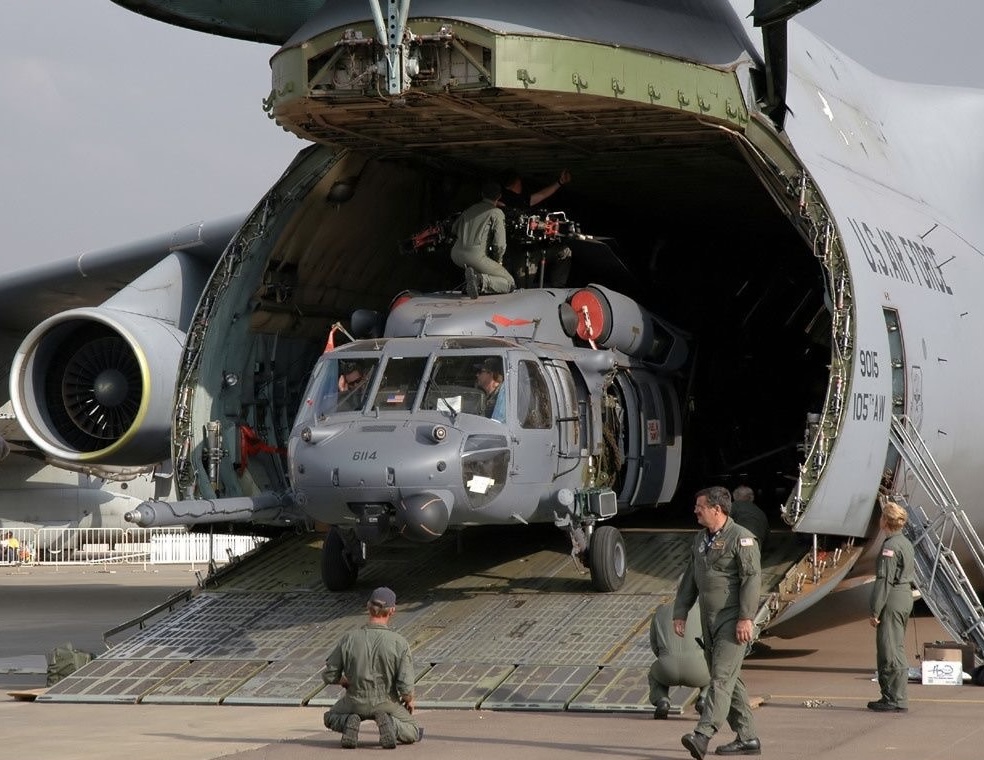
The Sikorsky HH-60G Pave Hawk, designated as part of the S-70 family of helicopters, is a highly capable combat search and rescue (CSAR) aircraft operated primarily by the United States Air Force. Developed from the UH-60 Black Hawk, the Pave Hawk incorporates specialized systems and modifications that enable it to conduct long-range missions in hostile and demanding environments. Its combination of durability, versatility, and advanced avionics has made it one of the most respected helicopters in modern military aviation.
The HH-60G Pave Hawk entered service in the late 1980s as a replacement for the aging Sikorsky HH-3 “Jolly Green Giant.” Its primary mission is combat search and rescue, particularly the recovery of downed aircrews in hostile territory. Beyond CSAR, the aircraft has also been employed in humanitarian relief, medical evacuation, civil disaster response, and special operations support. This flexibility stems from the helicopter’s robust design and ability to integrate cutting-edge technology.
Structurally, the HH-60G retains the proven airframe of the UH-60 Black Hawk but is equipped with several mission-specific modifications. These include an in-flight refueling probe, which greatly extends its range, and external fuel tanks for endurance during long-distance missions. It also features a rescue hoist capable of lifting personnel from rugged terrain, water, or combat zones. To operate in low-visibility and hostile conditions, the Pave Hawk is fitted with a forward-looking infrared (FLIR) system, night vision goggle-compatible lighting, and an integrated avionics suite that enhances navigation and situational awareness.
Survivability is a critical aspect of the Pave Hawk’s design. The helicopter is armed with two 7.62 mm or .50 caliber machine guns mounted on each side for defensive fire. Additionally, it is fitted with radar and missile warning systems, infrared countermeasure dispensers, and armor protection for critical components. These features allow the aircraft to penetrate contested airspace while increasing the chances of mission success and crew survival.
Power is provided by two General Electric T700-GE-701C or 701D turboshaft engines, giving the HH-60G both high performance and reliability. The helicopter can reach speeds of approximately 184 miles per hour (296 kilometers per hour) and has a combat radius exceeding 200 nautical miles without refueling. With aerial refueling capability, however, its operational reach is nearly unlimited, making it invaluable for missions deep behind enemy lines.
The HH-60G has proven itself in numerous conflicts, from Operation Desert Storm in 1991 to recent operations in Iraq, Afghanistan, and other global theaters. Its ability to extract personnel under fire has saved countless lives, reinforcing its reputation as the modern “Jolly Green Giant.” Beyond combat, the Pave Hawk has played a vital role in responding to natural disasters, such as hurricanes and earthquakes, delivering supplies and evacuating civilians.
Although the HH-60G remains effective, it is gradually being replaced by the HH-60W Jolly Green II, which offers improved range, survivability, and systems integration. Still, the HH-60G Pave Hawk’s legacy is secure as a helicopter that embodied versatility, resilience, and dedication to the motto: “That Others May Live.”
Word count: ~503
Would you like me to make this more formal and encyclopedic (like a Wikipedia-style article) or engaging and narrative (like a magazine feature)?


